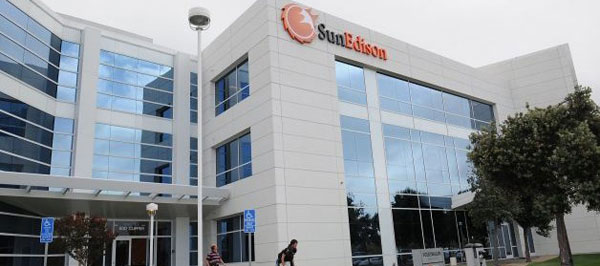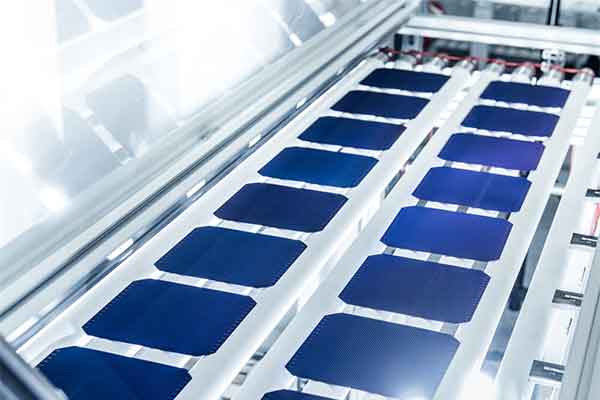BUSINESS INSIDER: The sad story of how the biggest solar company in the world fell to its knees
SunEdison, the biggest solar-energy manufacturing firm in the entire world, is nearing bankruptcy. Its decline has been swift and brutal, taking some of the most legendary names in finance with it. The stock that was once a hedge fund darling has turned into Wall Street’s nightmare.
A company that was once worth more than $10 billion is now valued at $150 million, with close to $8 billion in long-term debt. This is because the company’s business structure, which was once considered quite complex, was in a matter of months found to be quite simple — it simply could not generate enough cash. Continue to the entire article
THE WALL STREET JOURNAL: SunEdison Said to Be Preparing to File for Bankruptcy
SunEdison, whose stock has plunged in recent months, would rank among the largest financial collapses in recent years. The company, based about 20 miles outside St. Louis, used a combination of financial engineering and cheap debt to grow to be one of the country’s biggest developers of renewable-power plants.
But a proposed $1.9 billion takeover of residential-rooftop installer Vivint Solar Inc., which was terminated last month, was unpopular with investors. Meanwhile, falling oil prices caused a broad selloff for energy stocks, and capital-market turbulence stoked concerns about SunEdison’s ability to continue financing acquisitions.
SunEdison’s stock fell to fresh lows this past week on bankruptcy fears and news that the company is facing Securities and Exchange Commission and Justice Department investigations. Its market capitalization is now about $150 million, and it had long-term debt of about $7.9 billion as of Sept. 30, according to a regulatory filing. Continue to the entire article
CHICAGO TRIBUNE: The $2.6 billion buying binge that pushed SunEdison to the brink
Founded in 2003, SunEdison helped pioneer “no money down solar,” according to its founder and original chief executive officer, Jigar Shah. In 2009, MEMC Electronic Materials Inc. — a manufacturer of silicon wafers used to make solar cells — bought SunEdison, which was then among North America’s largest solar energy services providers. MEMC changed its name to SunEdison in 2013, reflecting the boom in renewable energy.
SunEdison’s acquisition spree began in 2014, taking advantage of a financing technique used by renewable-energy developers known as yieldcos. These publicly traded companies are set up to buy their parents’ wind and solar farms. When they work, the parents get needed cash to build more clean-energy projects, and yieldco shareholders get a steady dividend flow.
But the arrangement can also push developers to buy more and more assets to sustain growth, according to analysts. “There was a perceived high-growth rate built in that wasn’t sustainable,” said Paul Bradley, the chief financial officer of Toronto-based independent power company Northland Power Inc. “It was too good to be true.” Continue to the entire article
SEEKING ALPHA: SunEdison’s Implosion Is A Stark Reminder Of Industry Volatility
The solar industry has experienced an extraordinary amount of volatility in recent quarters. The market appears to be growing increasingly wary of the high risk and high-growth approach, which is most evident in SunEdison’s (NYSE:SUNE) spectacular collapse. In fact, SunEdison is now teetering on the brink of bankruptcy despite being hailed as a potential energy supermajor just a few quarters back. SunEdison is a clear reminder of the highly unpredictable nature of the solar industry.
SunEdison’s rapid decline serves as a stark reminder of the risks involved with high-growth solar business models. SunEdison continues to plummet to all-time lows with recent news that the company is planning to file for Chapter 11 bankruptcy. Given the countless problems plaguing SunEdison, the company’s survival has been in doubt for a while now. The company’s ambitions to build one of the largest and most comprehensive renewable energy companies has clearly backfired to an almost unimaginable extent.
A mix of growing market skepticism and volatile financing has put tremendous strain on SunEdison’s ability to operate. The billions of dollars SunEdison spent on acquiring companies have only compounded the company’s financial troubles in the increasingly harsh market environment. With growing legal battles, strained investor relations, an increasingly unviable business model, and billion dollars in debt, SunEdison is in a hopeless situation. Continue to the entire article














Comments